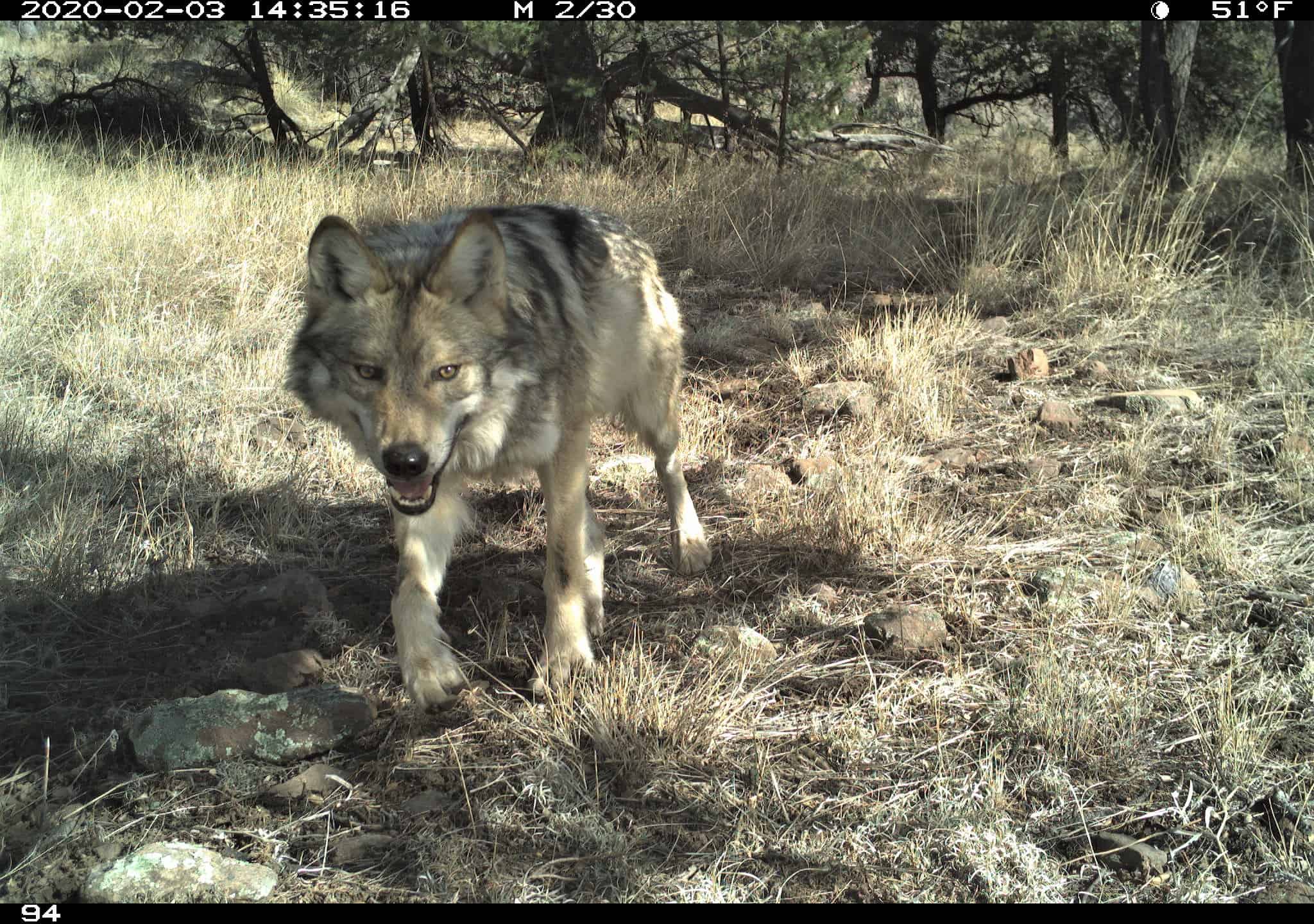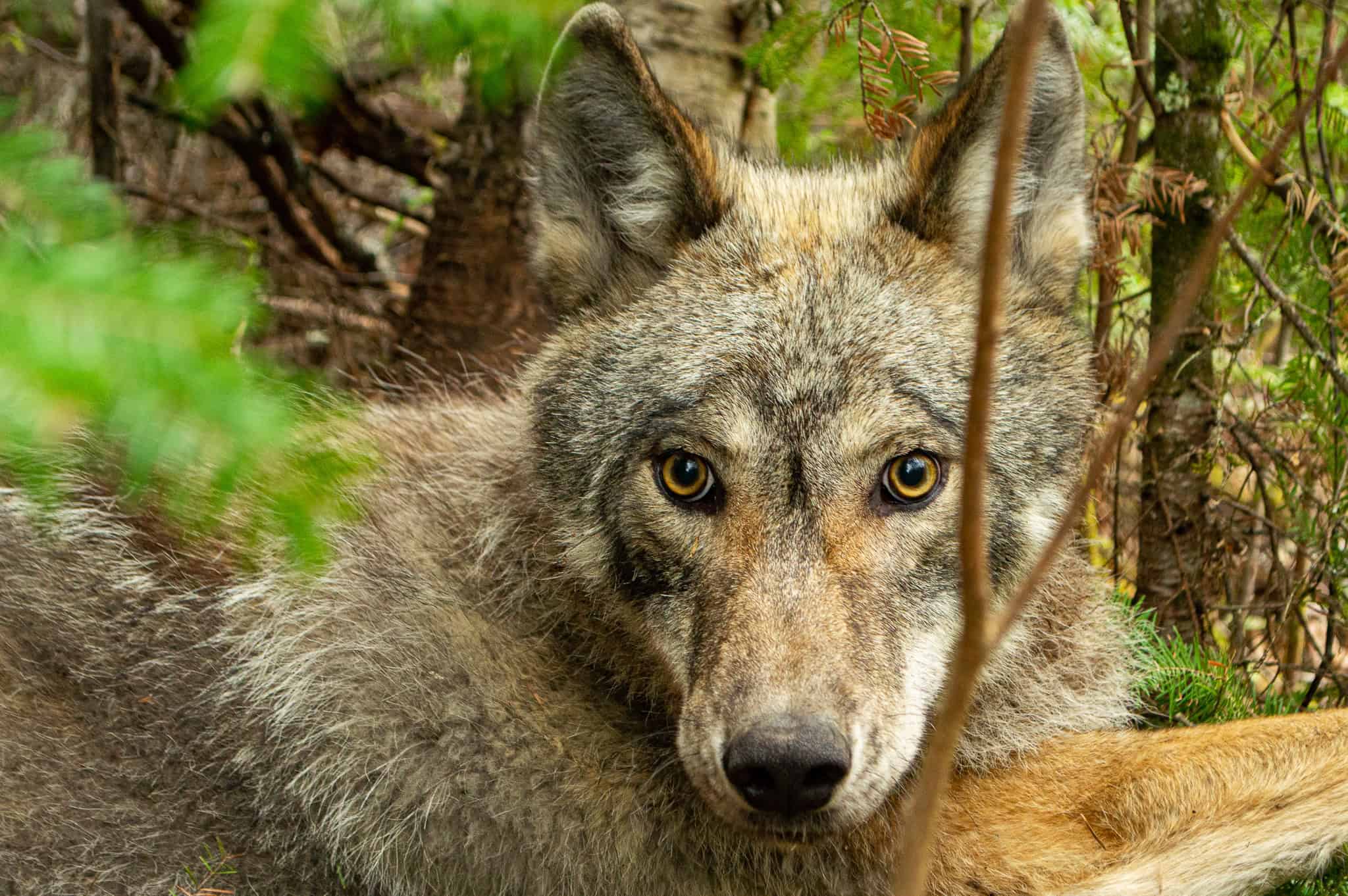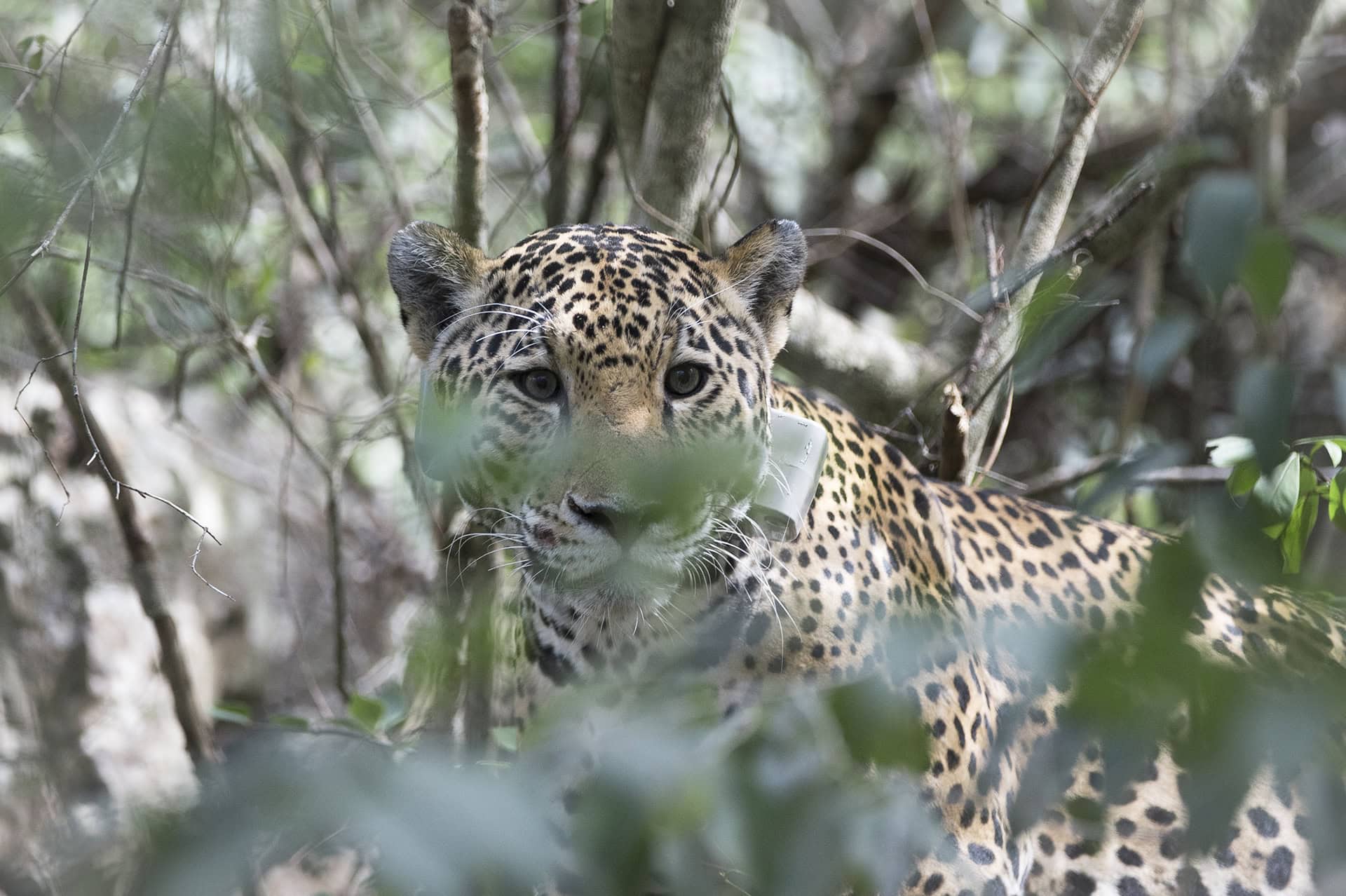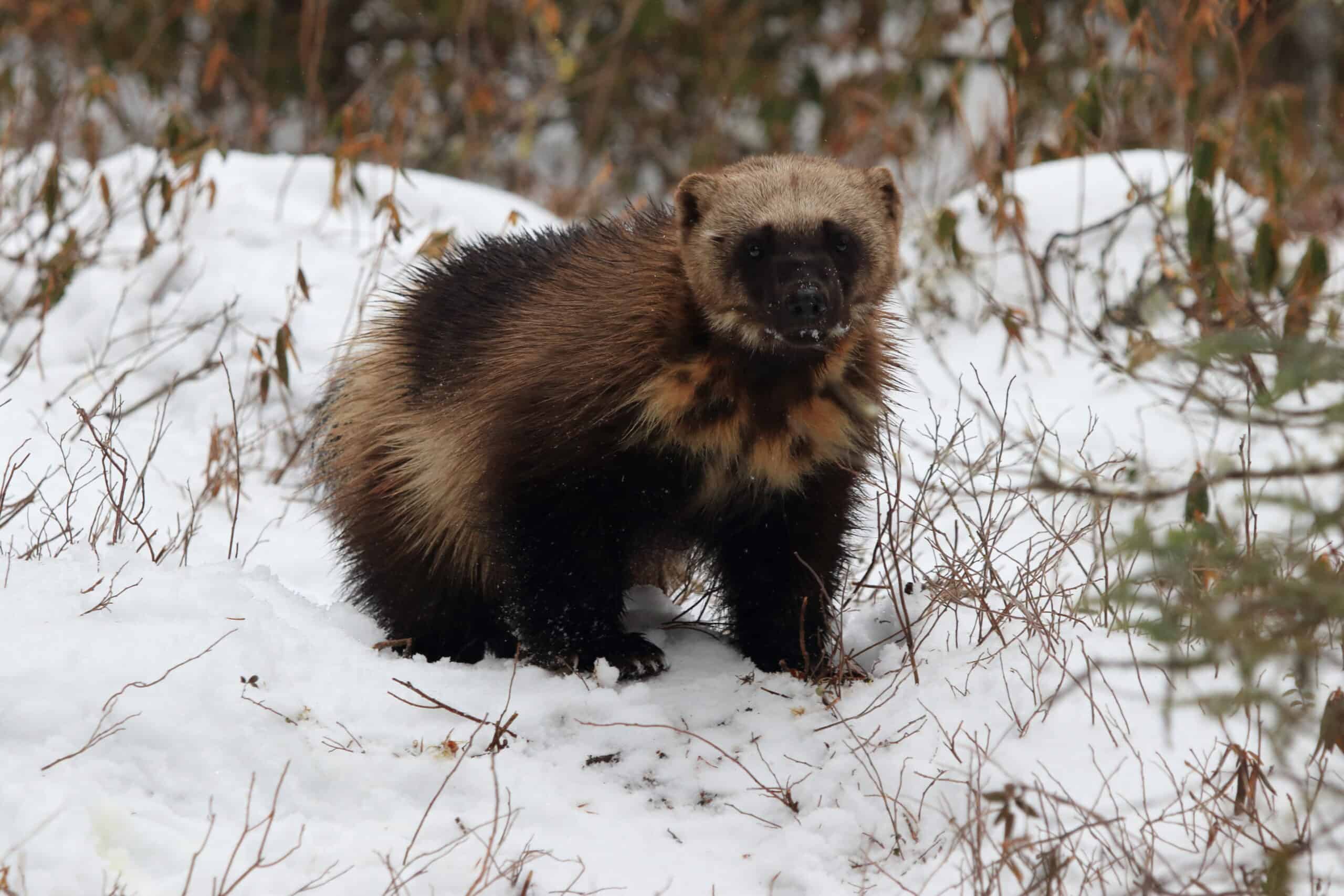Share this article
Wildlife Featured in this article
- Mexican wolf
- cougar
- mule deer
Wild Cam: Collar tracking more accurate than trail cameras
Researchers were searching for an efficient way to track the population of Mexican wolves
Mexican wolves have been making a steady comeback from near extinction in the U.S. Southwest in the past quarter century.
“The wolf population is continuing to grow pretty rapidly,” said TWS member Brianna Russo, a wildlife research specialist with the Arizona Game and Fish Department.
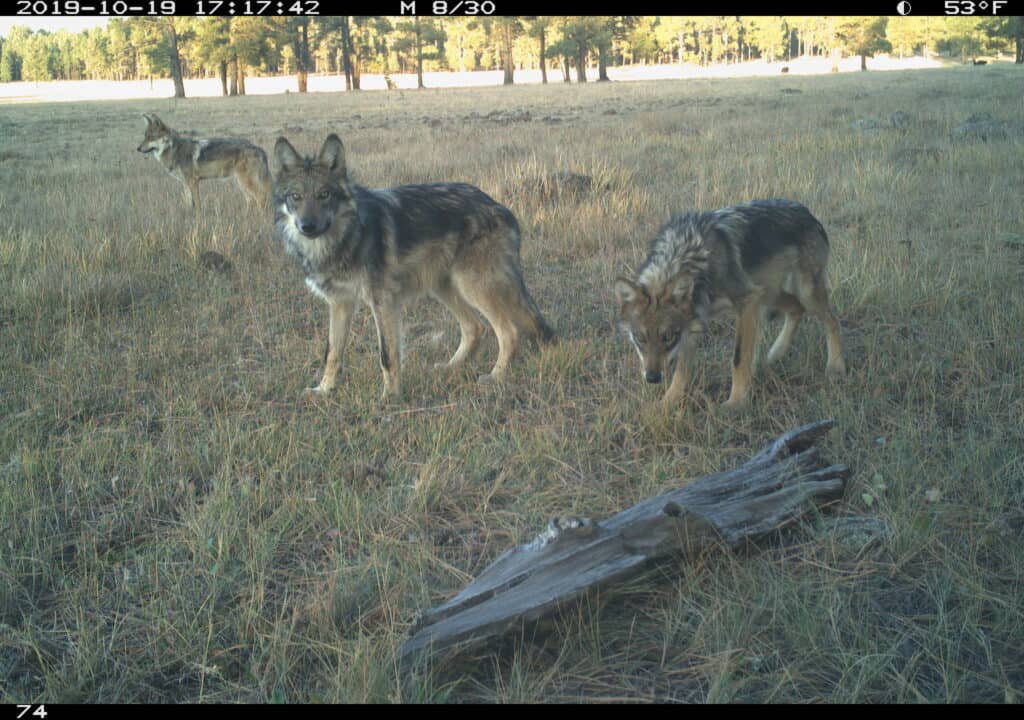
Russo and her colleagues wanted to see whether trail cameras might be an efficient method to track Mexican wolves (Canis lupus baileyi), considered federally endangered by the U.S. Fish and Wildlife Service, in Arizona. The method currently used, involving fitting tracking collars on at least one wolf in each pack, is expensive. Wildlife managers have to fly planes or helicopters to track the collared wolves and count how many more animals are in the pack.
“The wolf population is continuing to grow pretty rapidly.”
Brianna Russo
Russo led a study published recently in the Wildlife Society Bulletin, in which she and her colleagues set up trail cameras in the White Mountains in the eastern central pine forests of Arizona, from the winter of 2019-2020 to the summer of 2020. They put out 124 cameras, checking them every two weeks, except for some of the more remote cameras.
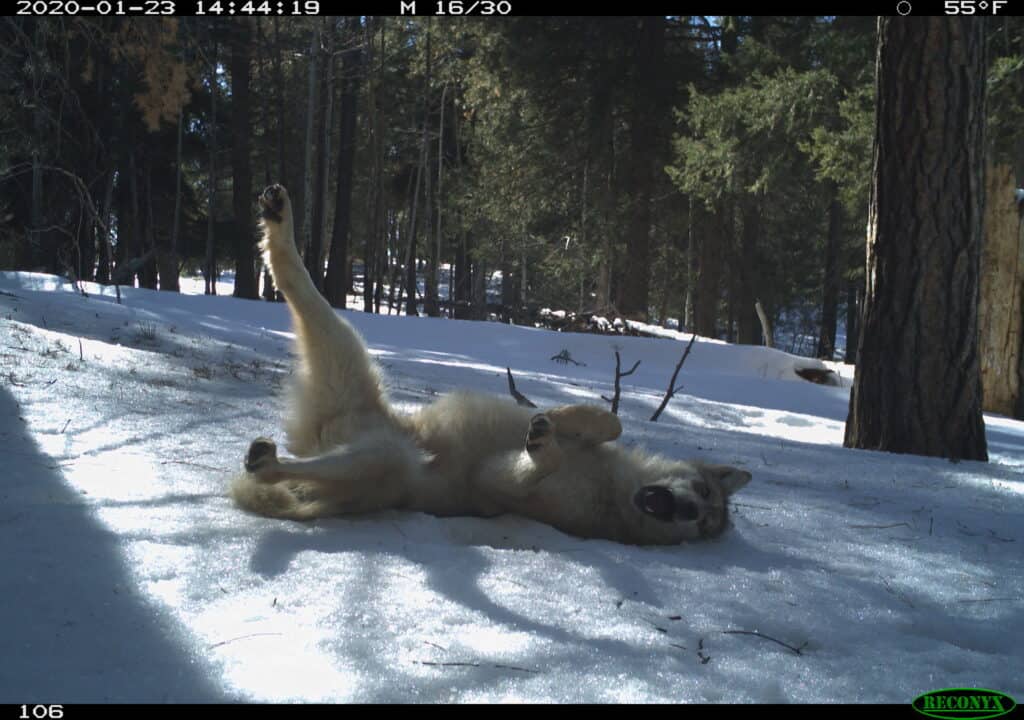
The researchers then identified wolves by marks placed on the tracking collars.
The researchers found that the trail camera method wasn’t as accurate as the current method of using tracking collars, ground, and aerial surveys. The traditional method, for example, counted 241 wolves in both New Mexico and Arizona. In Arizona alone, the traditional method had counted 62 wolves in the winter and 59 in the summer. The camera method analysis, on the other hand, showed there were 33 to 50 wolves, depending on the season and whether the researchers used wolf GPS points to help identify individuals in the photos.
“All of our abundance estimates were below that official count,” Russo said. “It’s a little disappointing that this method didn’t work for us—but at least now we know.”
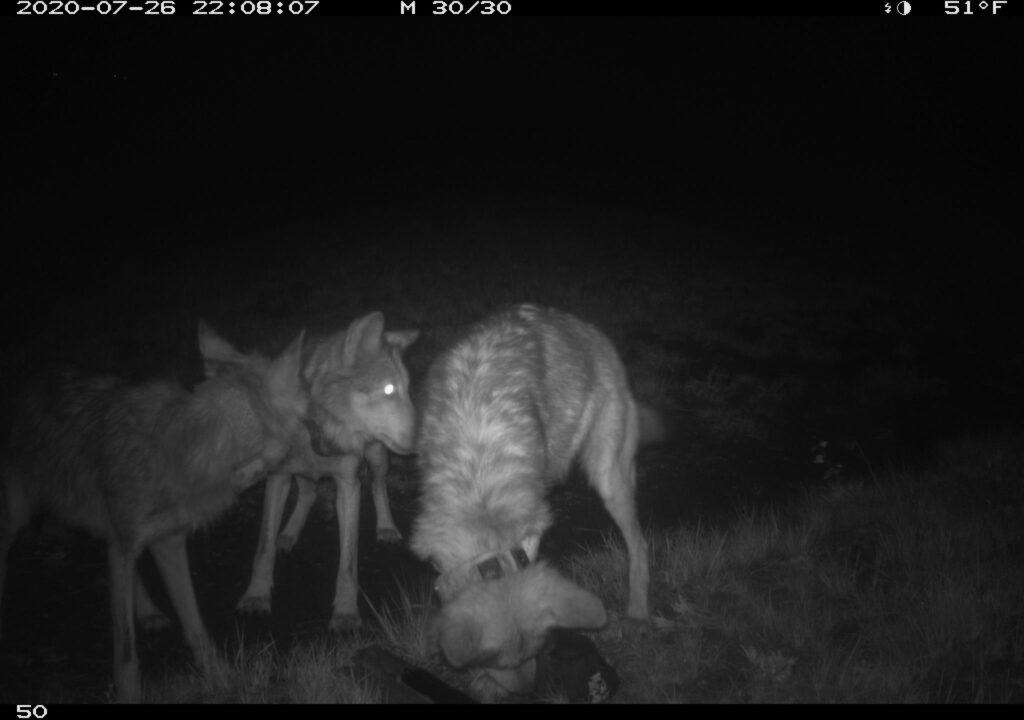
Part of the problem was identifying individual wolves in trail camera pictures. The researchers could really only identify wolves that had been collared. Wildlife managers typically put unique markings on the collars using color-coded duct tape. But this can fade or peel off at times. The colors that were used also weren’t identifiable at night, even though the cameras were infrared.
In other cases, the wolves’ fur was too heavy, hiding the markings on collars. Overall, Russo said the trail camera method was even less accurate in the winter than in the summer, when lighter coats don’t hide the collars as much.
Improving the method for marking individual wolves on collars might improve the accuracy of trail camera counts in the future, Russo said. Using colors that show up in infrared would help, for example, or changing the method from duct tape to something a little more resilient over the years. Using something like colored epoxy might improve durability of the marks, for example, and researchers would likely have to deploy them less often.
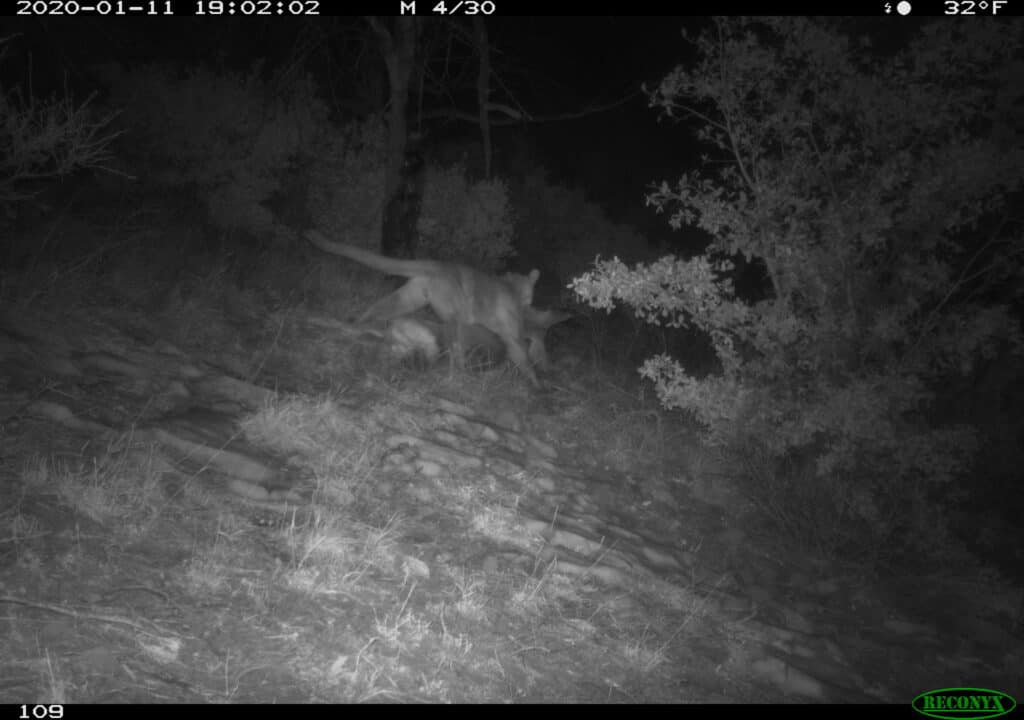
The trail cameras revealed some other interesting things, though. The researchers captured images of a cougar (Puma concolor) dragging a mule deer (Odocoileus hemionus) across the frame.
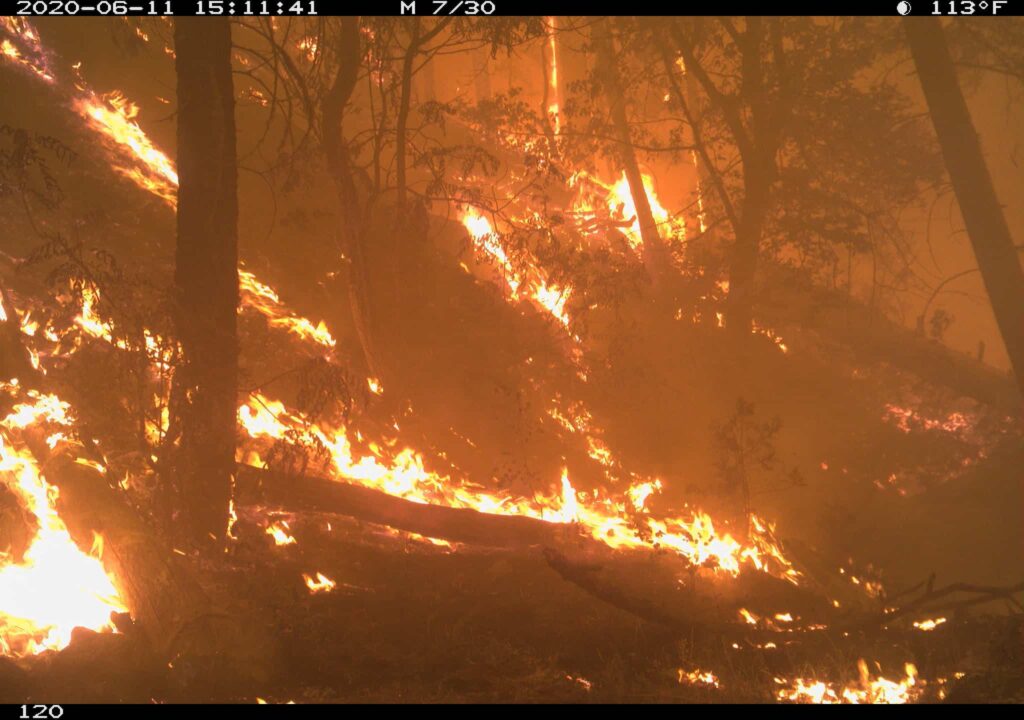
They also captured images of a wildfire that came through the area, taking a camera with it.
Russo is still optimistic that there is a place for trail cameras in the future, though, especially if used in conjunction with the collaring method. “There’s still potential for this method to work, but if it’s going to be implemented, we still need to do more modification and experimentation with it,” she said.
This article features research that was published in a TWS peer-reviewed journal. Individual online access to all TWS journal articles is a benefit of membership. Join TWS now to read the latest in wildlife research.
Header Image: Researchers analyzed whether trail cameras could help researchers accurately estimate the number of Mexican wolves. Credit: Arizona Game and Fish Department Research Branch



